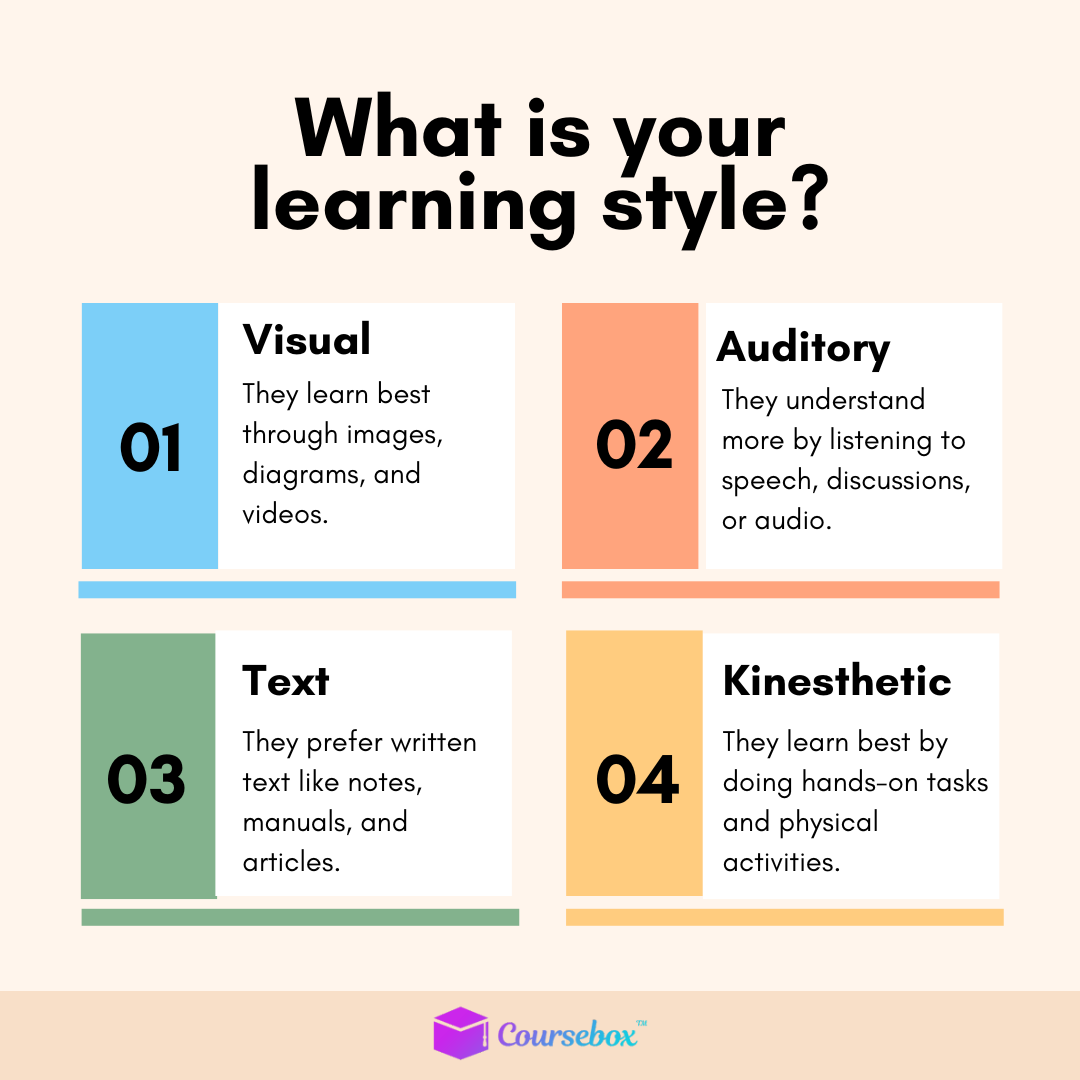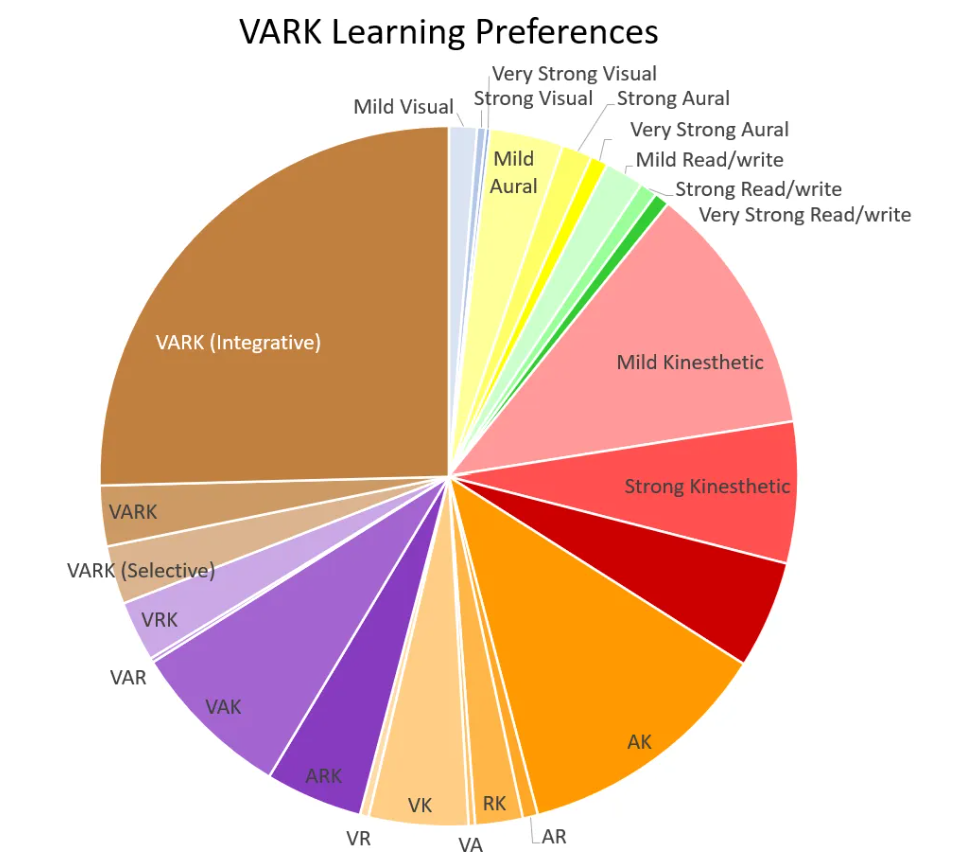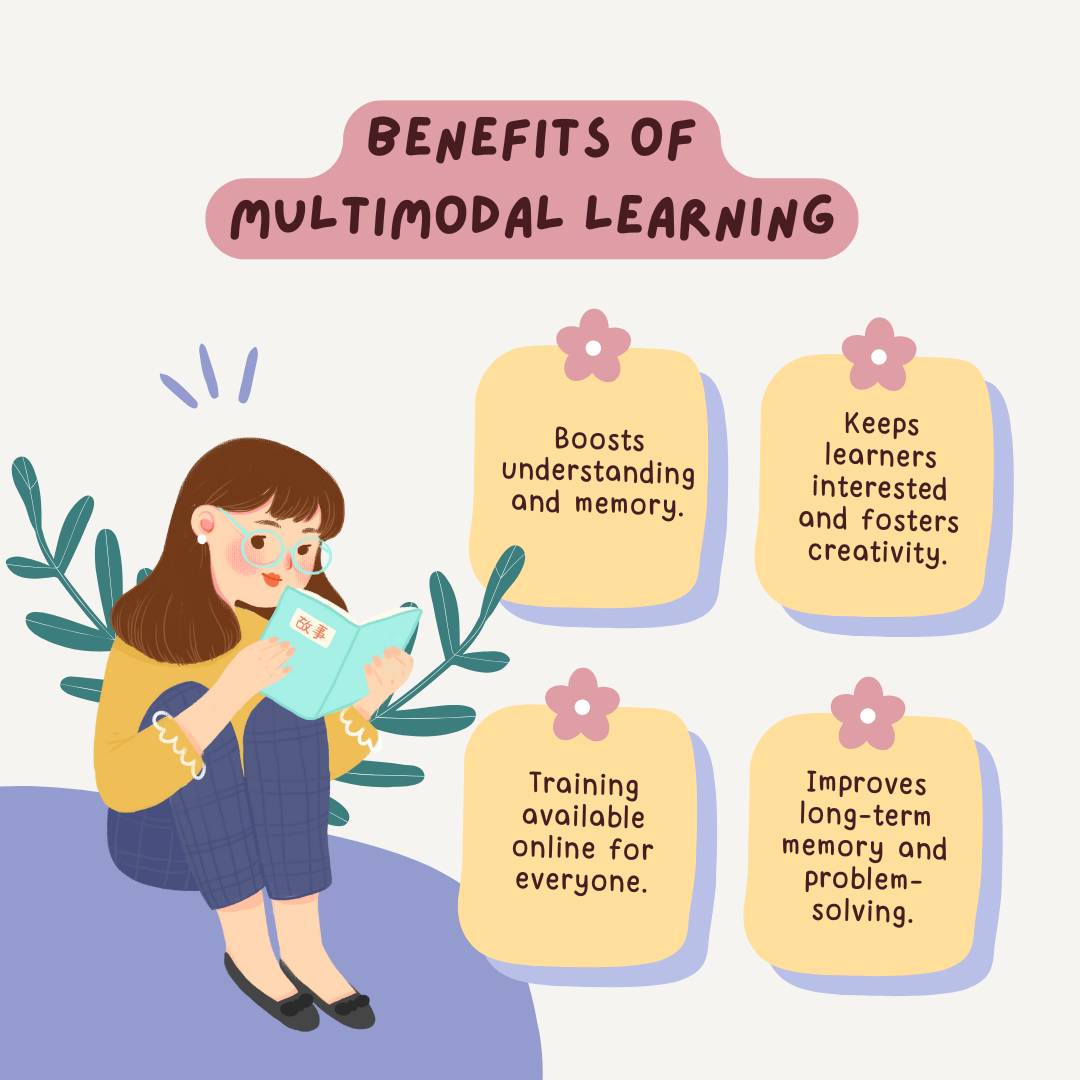Fleming Vark Model: Pros, Cons & Implementation Tips
Fleming VARK Model explained: Understand pros, cons, and how to apply this learning style framework in education and workplace training.
Fleming VARK Model explained: Understand pros, cons, and how to apply this learning style framework in education and workplace training.

Ever noticed that some lessons only click once you change how you study, like sketching a diagram, discussing it out loud, or practicing hands-on? That simple shift points to the Fleming VARK model, a framework describing four learning preferences: visual, auditory, read/write, and kinesthetic.
In today’s world of online courses and self-paced study, knowing your learning style can be a game-changer. While research shows style matching doesn’t guarantee better results, reflecting on how you learn can help you choose smarter strategies, stay engaged, and retain information more effectively.
This guide walks you through the four VARK styles, highlights what studies reveal, and shares practical tips for applying the model in real learning situations.

Neil Fleming created the VARK framework in the early 1990s to describe how people often prefer to take in information. VARK stands for Visual, Auditory, Read/Write, and Kinesthetic. Each mode highlights a different pathway for processing and understanding new material.
Visual preference involves learning through symbols and diagrams rather than plain text. Charts, maps, arrows, flowcharts, and spatial layouts help these learners see connections and patterns. It goes beyond photographs or video clips—what matters is structure, spacing, and design that make relationships between ideas clear.
Auditory learners process information best when hearing or speaking. Lectures, group discussions, voice notes, or even talking through problems alone can boost retention. They often learn by repeating information aloud or asking questions, not because they missed details, but because voicing thoughts helps them build understanding.
This preference emphasizes words—both reading and writing. Textbooks, reports, manuals, essays, and lists feel natural to those who favor this mode. Many digital resources, such as wikis or text-heavy slides, align with this style. People with this preference often keep notebooks, rely on dictionaries, and value well-organized written material.
Kinesthetic preference connects learning to real-world experience. Case studies, experiments, demonstrations, practice tasks, and simulations bring concepts to life. These learners absorb knowledge most effectively when they can touch, move, or directly interact with material. “Learning by doing” sums up this style—practical involvement outweighs observation.

Few people rely on only one style. Many use a mix, called multimodal learning. Two patterns exist:
Fleming emphasized that real life rarely fits neatly into one box. Instead, VARK works best as a reflective tool, helping learners notice preferences while encouraging flexibility across situations.
Neil Fleming developed the VARK framework in 1987 after years of observing classrooms across New Zealand. During his role as a senior inspector, he sat in on more than 8,000 lessons.
Something puzzled him: respected teachers sometimes failed to reach learners, while less-experienced educators occasionally connected with ease. That contrast sparked his curiosity.
When Fleming joined Lincoln University, he began studying patterns in how learners process information. He built on earlier theories of learning styles, including Honey & Mumford’s work (1982), David Kolb’s experiential model (1984), and Walter Burke Barbe’s VAK model from the late 1970s.
Barbe had highlighted three core modes: visual, auditory, and kinesthetic. Fleming refined that idea by dividing the visual dimension into two categories, visual and read/write, and created a four-part model.
To make it practical, he designed the VARK questionnaire, a short self-assessment that helps learners reflect on their preferences.


Visual preference leans on structured images such as charts, diagrams, maps, and flowcharts. These learners process spatial layouts effectively and often recall details from symbols or graphics. Interactive videos or photos alone do not always suffice. What matters is a clear visual structure showing relationships.
Auditory learners build knowledge through listening and speaking. Lectures, group discussions, voice recordings, and storytelling support their style. Many process ideas by talking them through, sometimes repeating points aloud simply to strengthen understanding.

This group thrives on text. Manuals, essays, lists, articles, and well-written notes feel natural. Strong reading comprehension and written communication often accompany this preference. Clear, structured handouts or summaries help these learners succeed.
Kinesthetic preference links directly to action. Practical exercises, case studies, role-plays, or simulations deliver the strongest impact. Learning sticks when tied to real-world tasks or physical movement.
Most learners use more than one style. Fleming described two main patterns:
Data from more than one million VARK questionnaires highlights this distribution:
Interestingly, more learners reported preferring all four modes (31%) than those with the single most popular preference, kinesthetic (23.2%). This supports the idea that learning is rarely one-dimensional.

Despite popularity, research evidence remains weak. Major limitations include:
Large reviews echo the same conclusion: matching teaching to a reported learning style does not reliably improve performance. The Education Endowment Foundation rates the strength of evidence for learning styles as extremely low.
Yet belief in the model persists. Surveys suggest that nearly 90% of instructors consider learning style models valid. The appeal lies in intuition—it feels natural to think that tailoring lessons to preference should help. Fleming himself cautioned against overconfidence, remarking:
“You can like something, but be good at it or not good at it… VARK tells you about how you like to communicate. It tells you nothing about the quality of that communication.”
In short, VARK holds value as a reflective tool, not as a prescription for guaranteed results.
Even though evidence linking learning styles to improved outcomes remains limited, understanding how learners prefer to process information can still guide thoughtful course design. In digital education, VARK provides a framework for creating varied, engaging learning experiences.
VARK can spark metacognition—awareness of how one learns. Encouraging learners to reflect on preferences helps identify strengths, challenges, and opportunities for improvement. Short quizzes, polls, or guided reflection exercises can help students understand which modalities feel most effective for them.
Online courses benefit from combining multiple modes of content delivery:
Even if learners do not fit perfectly into one category, offering variety ensures engagement and accommodates diverse needs.
Pro Tip: Multimodal approaches often yield the broadest reach.

Variety in presentation keeps learners motivated. Gamified quizzes, interactive polls, and real-world scenario exercises reinforce material while catering to multiple preferences. Allowing learners to choose activities aligned with their strengths can also enhance satisfaction and participation.
While VARK provides insights, it cannot replace strong instructional design. Consider:
Balancing preferred modes with proven teaching methods maximizes online learning effectiveness. Well-designed content, interactive elements, and thoughtful pacing remain key drivers of success, regardless of the VARK profile.

Coursebox AI makes applying VARK principles in online courses simple and efficient. Our AI-driven course builder converts documents, videos, and websites into interactive lessons, supporting visual, auditory, read/write, and kinesthetic modalities.
Automated quizzes, video narration, and hands-on exercises help create a multimodal experience without extensive manual work. Educators can design online courses that engage every type of learner while focusing on clear objectives and active learning, saving time while boosting engagement.
Learning styles spark debate. Some educators and trainers find VARK helpful for understanding preferences, while others warn it shouldn’t replace evidence-based methods. Despite limits, reflecting on how learners take in information can boost metacognition and engagement.
Platforms like Coursebox AI make it easy to create multimodal courses that reach visual, auditory, read/write, and kinesthetic learners effectively.
Book a FREE demo today!
Yes, VARK remains useful as a reflective tool for understanding learning preferences. While research shows matching teaching styles to VARK does not improve performance, many educators still use it to encourage self-awareness and to design varied, engaging learning activities.
Neil Fleming is best known for developing the VARK model in the late 1980s. As a New Zealand educator and researcher, he created the VARK questionnaire to help learners identify whether they prefer visual, auditory, read/write, or kinesthetic approaches when processing new information.
The VARK model is simple, easy to apply, and encourages learners to reflect on how they process information. It supports variety in teaching methods, motivates learners to try new strategies, and has gained wide recognition across education and workplace training environments. Personalized learning platforms like Coursebox AI can help apply models like VARK in real training programs, making learning design more individualized and effective.
Teachers can use VARK to diversify instruction methods. Adding visuals, discussions, written resources, and hands-on activities ensures content reaches students with different preferences. It works best when blended with evidence-based strategies like active recall and spaced repetition rather than used as a strict framework. To implement the same in their curriculum, teachers could utilize modern solutions like Coursebox AI.
You can complete the VARK questionnaire, available online, to explore your learning preferences. Reflecting on past experiences also helps—ask whether diagrams, discussions, text, or hands-on practice make information easier to grasp. Many people find they use a mix of styles depending on context.
